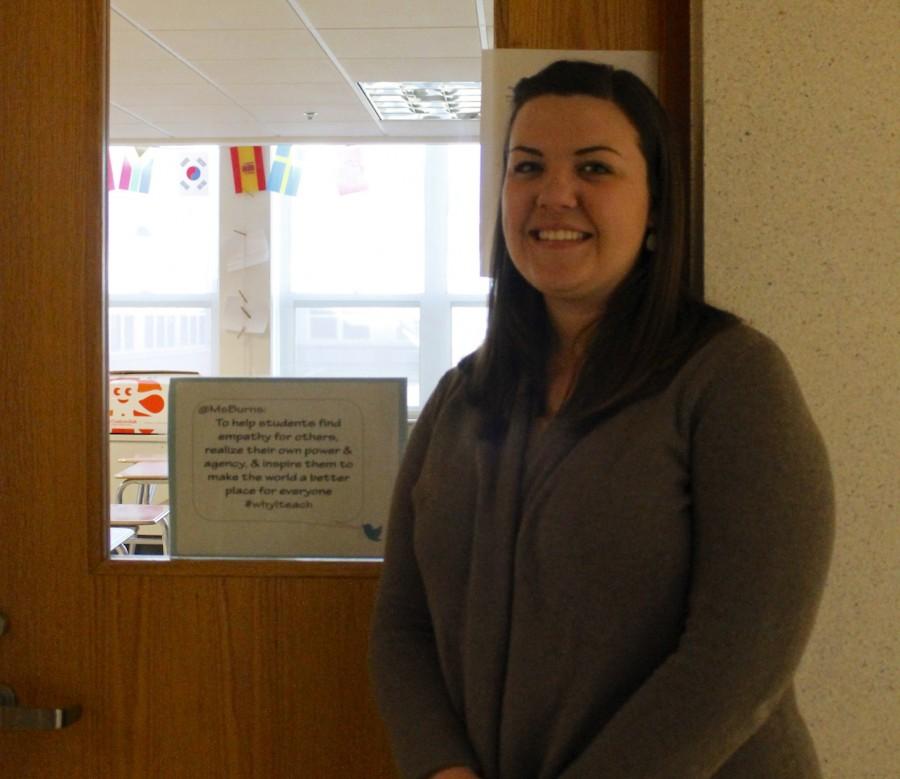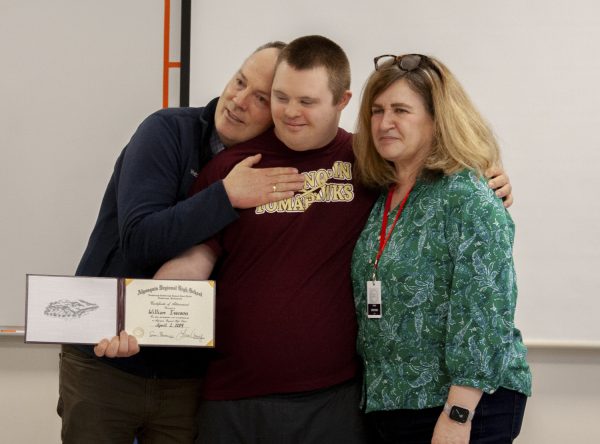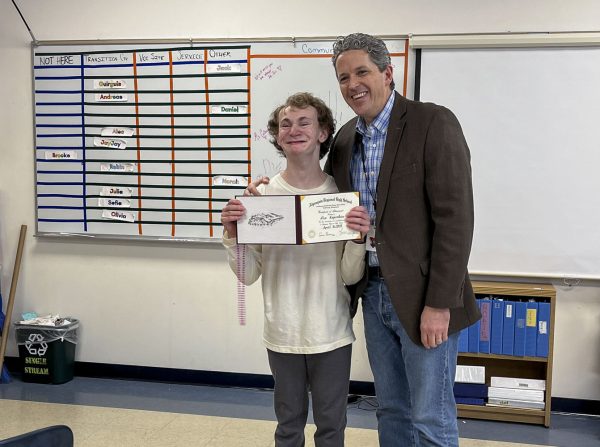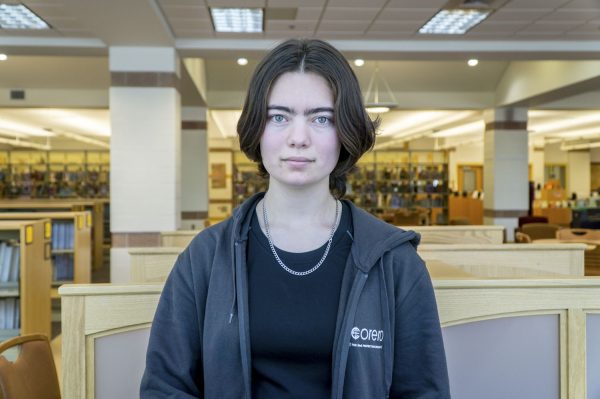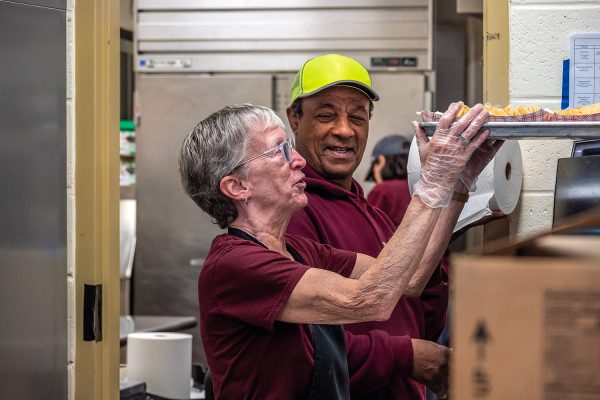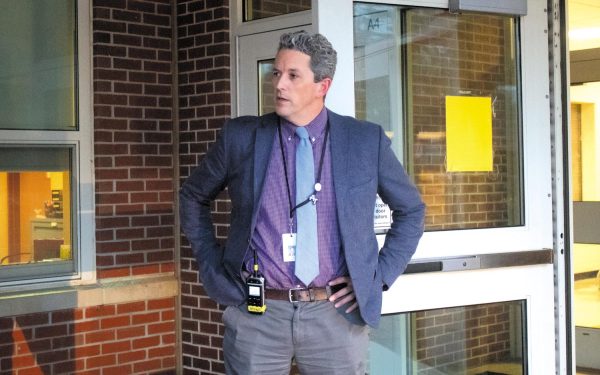Department focuses on #positivity
Social studies department head Brittany Burns is leading her department with the theme of positivity this year. She initiated Algonquin’s participation in the #whyIteach Twitter movement, which has spread across the nation and encourages teachers to think about why they chose to be educators.
December 7, 2015
The social studies department participated in the “#whyIteach” Twitter movement, which was initiated by the non-profit media production company Learning Matters.
The Twitter account and website Why I Teach revolves around inviting teachers to share why the classroom matters to them. Social studies department head chair and teacher Brittany Burns introduced this concept to her colleagues.
“The goal was to get teachers to tweet about the reasons why they teach,” Burns said. “As a department, we want to focus on the positive things, the things we love about our jobs.”
According to Burns, “#whyIteach” is part of a larger process concentrating on the positivity generated through teaching.
“We have a lot of new mandates from the state and new paperwork items,” Burns said. “It can be easy to feel discouraged, or overwhelmed, or burdened by that.”
“We talk about teaching and we talk about kids and curriculum but we hardly ever talk to each other about why we’re here.” — Department Head Brittany Burns
“It’s always good for people to sit back and ask themselves essentially why they do it,” Barry said. “I teach for a paycheck. I teach because I’ve got curriculum I’ve got the cover. I teach because I have to fulfill my duties as a member of the social studies department. But ultimately that’s not why I teach. So you have to sit down and remind yourself of your core value.”
Burns connected with her department through email and asked them to answer the question of why they teach. Every teacher in the department responded and their responses now decorate the classroom doors in hallways G100 and D100.
“We put [the responses] on the doors for a couple reasons,” Burns said. “It’s a reminder to ourselves, every time we walk in a classroom, what it is that brings us here and why we love our jobs so much. I hope students notice too and think ‘Why did my teacher pick this job?’ or ‘Why are they here?’”
History teacher Nathaniel Uttaro hopes students appreciate their teacher’s reasons behind teaching.
“It’s good for students to see that there’s a larger purpose to why [teachers] are here,” Uttaro said. “It’s not necessarily just about a particular subject or a job. It’s about what we want to accomplish as human beings.”
By participating in the Twitter movement, the department was also able to grow closer and gain a better understanding of why each of them is drawn to the same career.
“We talk about teaching and we talk about kids and curriculum but we hardly ever talk to each other about why we’re here,” Burns said. “So that was a really neat opportunity for me as a teacher and as a department chair to get to know that aspect of my colleagues.”
Burns said she encourages other departments to participate in the “#whyIteach” in order to inspire the process across the school.
“I would encourage people to walk around and take a look, the teachers said some really awesome things,” Burns said. “And for students to ask their teachers about it, use it as a conversation starter.”

